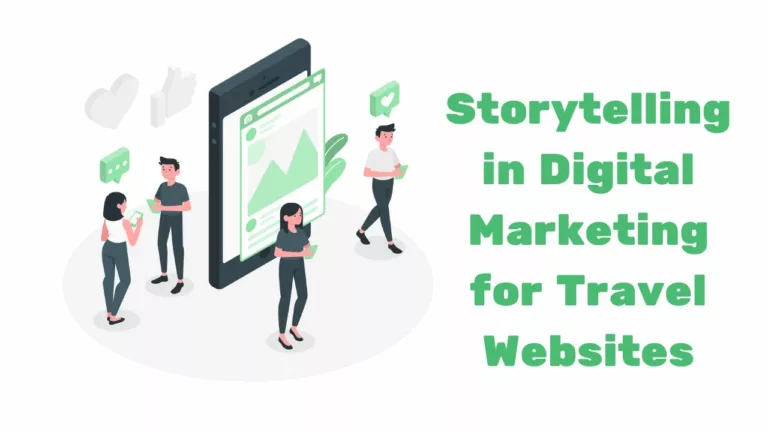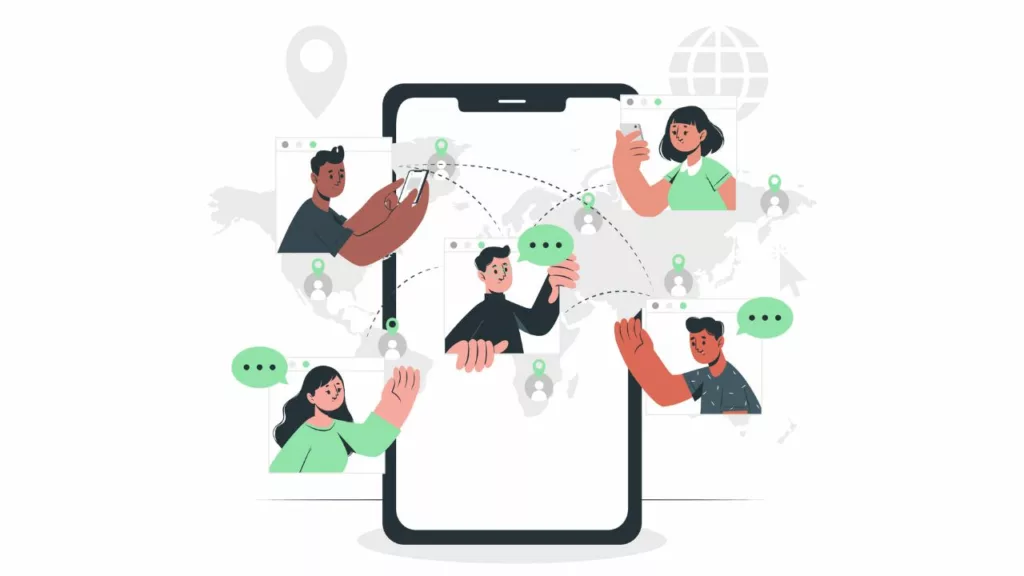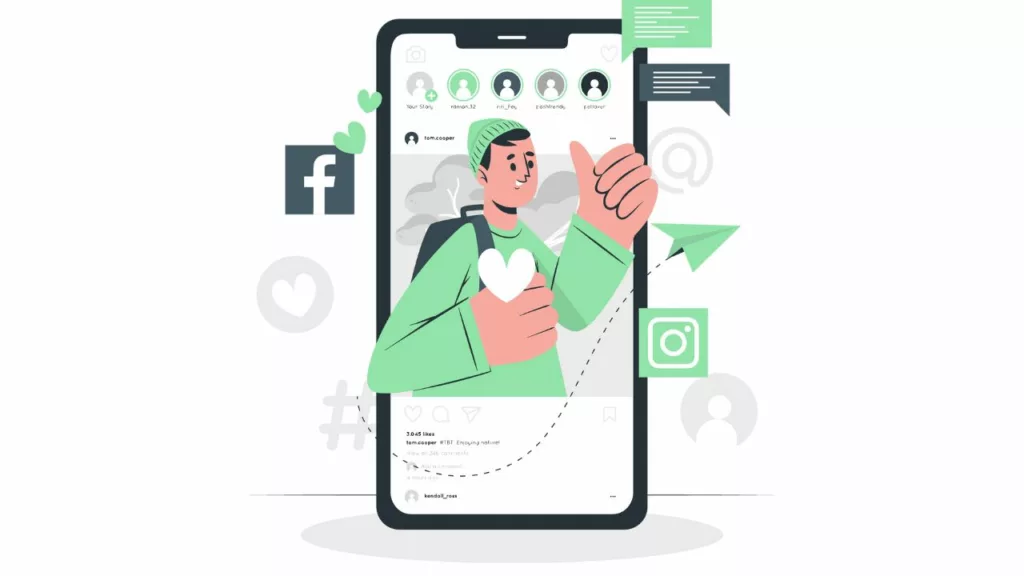

Storytelling in Digital Marketing for Travel Websites
From the beginning of time, humans have used storytelling to connect, learn, and pass down knowledge from one generation to another. Today, we use storytelling in various forms and platforms, particularly in digital marketing, to engage with audiences, build brand identity, and drive action.
By sharing authentic stories, testimonials, and experiences, we create connections, foster trust, and ultimately influence consumer behaviour. Storytelling in modern times allows us to leverage technology to reach larger audiences, personalize messages, and adapt narratives to suit different platforms and formats, all while continuing the timeless tradition of connecting through stories.
So: Will AI take over all digital marketing in a few years? We don’t think so! However, the powerful tool might just take the jobs of marketers who don’t understand the importance of brand storytelling in digital marketing. We’re here to help you ensure you’re not one of those people.
No one can tell your brand story better than you — but below is a guide on how to tell that story in the best way for your marketing campaigns.
What Is Storytelling in the Digital Sphere?
Much like it sounds, digital storytelling is all about using genuine stories in a digital world — more specifically, we’re talking about digital stories that tie into your content marketing efforts. When you create engaging narratives on your websites and social media – in the form of blogs, videos, and email campaigns – you can connect with your audience.
With your audience engaged, you’re evoking emotions and opening up a space for human communication and connection. This helps you tell your brand’s story while making your audience feel connected to you rather than just being a number on your Google Analytics chart (even though that is an important element in your strategy).
Instead of just selling products, it’s about making memorable experiences and building customer relationships. By telling compelling stories, marketers can capture attention quickly (our attention spans are getting shorter), inspire action, and reach their goals online.
The trick, though, is to seamlessly blend your brand storytelling, infused with the emotional connection you’re hoping to make, with strategic digital marketing efforts. How do you do this?
Keep reading to learn some tips and advice from seasoned digital marketers and storytellers.
The Importance of Digital Storytelling in Content Marketing
Does your brand story really need to be told? Can you not just build brand awareness with a few good social media posts and email marketing to your target audience?
You could try these stock-standard, run-of-the-mill options. But we’re here to tell you that the best way to stand out in a crowded marketplace is to evoke emotions and create a deeper connection with potential customers. The brands who manage to do this, are the ones who enjoy more successful marketing campaigns and years of customer loyalty.
By crafting authentic and engaging stories, travel companies can transport their audience to exotic destinations, showcase unique experiences, and ignite their wanderlust. Storytelling humanizes the brand, making it more relatable and memorable to travellers who are seeking meaningful and immersive experiences.
It also enables travel companies and websites to differentiate themselves in a crowded market, build trust and loyalty with their audience, and ultimately drive bookings and revenue. In an industry where emotions and experiences play a significant role in decision-making.
Crafting a Compelling Brand Story for Your Travel Business
When your aim is to reach your audience with a heartwarming tale, it’s important to dig deep into what your brand story actually entails. We will always suggest that you incorporate personal core elements with data-driven insights — because data is almost as powerful as emotion, we promise.
Next, you need to figure out what you want your core message to be, and how that matches your brand’s values.
Instead of simply throwing a product or service at the consumer and expecting them to pay for it, you need to show them why your brand offers added value to their lives.
Examples of Travel Businesses Who Have Seen Successful Storytelling in Their Brands
There are some real-life examples of brands that have implemented a storytelling strategy and done well with it. We can use their journeys to help us with our own.
National Geographic
National Geographic Travel tells amazing stories about exploring, discovering, and protecting our planet. They inspire people to travel, appreciate nature, and conserve its wonders. They share stories and articles about unique places, cultures, and wildlife encounters.
Their photos are amazing and take you to faraway places, showing the beauty of nature and diverse cultures. Also, their documentaries and videos also tell stories and make you feel like you’re right there experiencing it all.
Intrepid Travel
Intrepid Travel champions sustainable travel, cultural immersion, and responsible tourism as the cornerstones of its brand narrative. Positioned as a socially conscious alternative to conventional tour operators, they curate small group adventures that not only immerse travellers in local cultures but also support community-based tourism initiatives while minimising environmental impact.
Through authentic storytelling, Intrepid Travel shares travellers’ experiences of engaging with local communities, participating in off-the-beaten-path adventures, and embracing cultural traditions. Their marketing materials showcase genuine images that capture the transformative power of travel and its positive effects on both travellers and destination communities, emphasising their dedication to responsible travel practices.
An Example for Our Travel Clients
While the above showcases great examples of how larger brands continue to execute brand storytelling as a part of their marketing strategies, it might seem harder to imagine this on a smaller scale.
But essentially the goal is to share with your audience why they should be travelling to your destination, or why using your tour guides is a better option than solo travel. You’re capturing attention by giving them a visual idea of themselves using your services, in your destination.
For example, your homepage could say:
“If you come to Morocco, you will see iconic landmarks, bustling markets, and stunning landscapes. You can visit the desert and go star-gazing at night.”
Or you could craft a story, like:
“Join us in Morocco for your next escape from the ordinary and immerse yourself in the culture. Spend your days wandering the streets where vibrant souks overflow with colourful spices, intricate rugs, and the rhythmic melodies of local musicians. Explore the ancient medinas of Marrakech, where narrow alleyways lead to hidden courtyards adorned with ornate tilework and fragrant orange blossoms. Venture into the Sahara Desert, where endless dunes stretch to the horizon, and the night sky dazzles with a canopy of stars.”
While the first option is much more factual, the second paragraph forms a picture in your readers’ minds about what Morocco will be like and gives them tangible reasons to visit.
Implementing Storytelling Techniques in Digital Marketing Strategies
Before you jump head-first into implementing digital storytelling and all its glory, remember to build that emotional connection, you have to include your audience in your decisions. You’re telling them a story, but that narrative needs to relate to them.
Find Your Brand Story
Your brand story comes from how your company was started, and what influenced your decision to offer the product or service that you do. If you’re not comfortable with this story or unsure of how to share this with the world, then your brand story just won’t reach the emotional level it needs to.
Define your brand’s personality by identifying traits and characteristics that represent it best. Whether you envision your brand as playful and adventurous or serious and professional, understanding its personality will shape the tone and voice of your storytelling.
Get to Know Your Target Audience
Understanding your audience is vital for effective marketing and storytelling. It lets you tailor your message to their needs and interests, making your content more engaging. By reaching the right people with the right message, you increase interaction and build trust and loyalty.
In short, knowing your audience helps you create compelling stories and marketing strategies that connect with them and deliver results.
Post on the Right Platforms
Brand storytelling can happen within your content marketing, you can inject it into social media campaigns, and you can pepper it into your email newsletters, product descriptions, or customer support interactions. All you need to do is discover where your target audience will be reached in the best way, and share your stories there.
Read more: The Best Travel Content Marketing Strategy for Tourism
Compel Readers with Your Content
Writing for the web means you need to hook your readers as soon as possible. Make your content captivating and relevant to grab readers’ attention. Use engaging language, compelling visuals, and intriguing storytelling techniques to keep them hooked from start to finish.
Stay Authentic and Transparent
Consumers want to hear your own story — not a fictionalised version of it. Be genuine and honest in your communication with your audience. Avoid misleading or exaggerated claims, and always strive to provide accurate and valuable information. Transparency builds trust and credibility, fostering stronger connections with your audience.
Integrate User-Generated Content
Encourage your audience to contribute their own content, such as reviews, testimonials, and user-generated photos or videos. Incorporating user-generated content adds authenticity and diversity to your brand’s narrative, while also encouraginga sense of community and engagement among your audience.
Keep Improving & Don’t Forget SEO Best Practices
Continuously refine and optimize your content to ensure it remains relevant and effective. Stay up-to-date with SEO best practices to improve your visibility and rankings in search engine results. By prioritizing both quality content and SEO strategies, you can maximise your reach and impact in the digital landscape.
Read more: The Best SEO Tips for Your Tourism Website
Practical Tips and Best Practices
- Connect With Emotions: Tell stories that everyone can relate to emotionally. Invoking emotions like empathy, joy, and nostalgia will make your clients feel more connected to your brand story.
- Share Customer Success: Let satisfied customers share their experiences with your products or services. Customer testimonials have proven to show huge success in helping customers trust brands.
- Peek Behind the Scenes: Show the human side of your brand by sharing behind-the-scenes stories. Short snippets of how your team works can create a strong emotional response with your customers.
- Story Support: Use storytelling to make customer support interactions more engaging and effective. Share examples of how you can ease their pain points with your services or products.
- Create Storytelling Guidelines: Develop clear rules and resources for your team to use storytelling effectively. Provide practical examples and templates to assist your team in implementing storytelling techniques across various platforms and contexts.
- Narrative Product Launches: Build excitement around new products or campaigns by telling stories about their benefits and impact. Instead of solely focusing on features, emphasize the journey and transformation that the product or campaign offers to customers.
- Interactive Story Maps: Engage your audience with interactive maps that visualize your brand’s journey. By incorporating multimedia elements such as short videos, images, and text overlays, you can provide a dynamic and immersive storytelling experience.
- Celebrate Diversity: Share stories from diverse perspectives to connect with a broader audience. Highlight narratives that reflect the richness of human experiences, cultures, and backgrounds.
Final Thoughts on Digital Storytelling
In conclusion, storytelling is a fantastic way to connect to your audience on a more personal level. Sharing your compelling brand story and finding ways to weave it into the consumer’s relatable stories creates endless opportunities for your brand to expand its reach.
In the competitive landscape of online travel marketing, mastering the art of digital storytelling is essential for travel websites seeking to differentiate themselves, build brand affinity, and drive conversions. By crafting authentic, compelling narratives that capture the essence of destinations and inspire travellers to embark on their own adventures, these websites can forge meaningful connections with their audience and establish themselves as trusted guides in the world of travel.
Looking for ways to create content that uses these storytelling efforts, shares your brand message, and captures your audience’s attention without losing the key elements of SEO and web writing? Our team of content writers would love to help you do just that.











